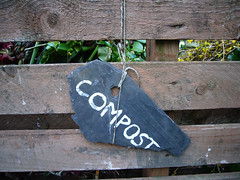5 Easy Composting Tips for Your Family Garden
Environmentally sound garden practices for the family garden

Most people know about composting, but as a busy parent this can feel like a lot of work. Try these five tips on how to add organic matter to your family garden and discover an easier way to “compost.”
One of the major keys to a successful garden is the incorporation of organic matter into the soil every year. I remember taking a soil class at UMass 15 or so years back and hearing my professor say, “the answer to almost any question I ask this semester will likely be to add organic matter to the soil. If the problem is nutrition, drainage, pH, disease & insect problems, etc… the solution often can be solved with the addition of organic matter.”
Soil needs organic matter for a host of reasons, including moisture retention, aeration, microbial life, a slow release fertilizer… but maybe you’re wondering how to increase the organic matter in your soil… Most people know about composting (see my post, The Dirt on Dirt) but as a busy parent this can be too much work for too little return. Here are five tips on how to add organic matter to your soil that my family often does, many of which you might not find in the pages of Better Homes and Garden:
- When you and the kids pull weeds just lay them back down on their side on top of the soil. They will die, become mulch, and slowly return the nutrients they have taken from the soil.
- Have the children rake up piles of your grass clippings and put them down as mulch. Providing you do not wait until the grass is 2′ tall, it will have few weed seeds. By the fall it will be semi-decomposted and ready to be worked into the soil.
- Add some leaves (ground if possible) to the beds. If it’s a perennial bed add them to the top as mulch. And if it’s a veggie bed, use as a mulch then work it into the soil in the late fall.
- Keep all plant matter in the bed. Why take the peony stalks away only to bring in bark mulch later? Why not just chop your bean stalks back into the soil or save them for a springtime mulch?
- Cover crop (for veggie gardens only). A cover crop is a seed of an annual plant that you broadcast onto the soil. It grows very quickly and then you turn it back into the soil. My favorite is buckwheat which i just pickup at Hadley Garden Center.
Part of the reason this style of composting will not be featured in Better Homes and Garden is because it can look a bit disheveled. So if you are aspiring to be in Martha Stewart’s next book, the above tips are not for you. But if you are a laid back Hilltowner, or a busy parent who is trying to grow a small vegetable patch or flower garden with your kids, it will look just fine! It works for my family garden!
ABOUT THE AUTHOR
Jim McSweeney
 Jim is a certified arborist, certified horticulturist, licensed pesticide applicator (needed for the application of organic pesticides in MA) & a professional landscape designer with over 15 years experience. He is also the owner of Hilltown Tree & Garden LLC. Jim is on the faculty at the New England Wildflower Society, teaching courses on a diverse range of topics. He lives and works in Zone 5 (Chesterfield, MA) with his family. Once a month here on Hilltown Families you will find timely gardening tips, from a pro in the field, that can be easily used by both avid and novice gardeners, specific to Western MA.
Jim is a certified arborist, certified horticulturist, licensed pesticide applicator (needed for the application of organic pesticides in MA) & a professional landscape designer with over 15 years experience. He is also the owner of Hilltown Tree & Garden LLC. Jim is on the faculty at the New England Wildflower Society, teaching courses on a diverse range of topics. He lives and works in Zone 5 (Chesterfield, MA) with his family. Once a month here on Hilltown Families you will find timely gardening tips, from a pro in the field, that can be easily used by both avid and novice gardeners, specific to Western MA.
[Photo credit: (ccl) Kirsty Hall]
 Hilltown Families
Hilltown Families 





























